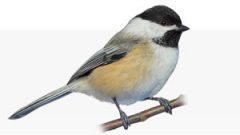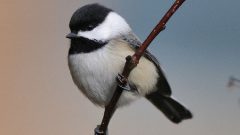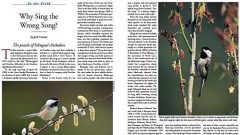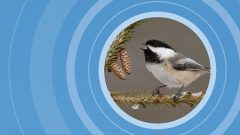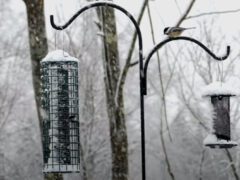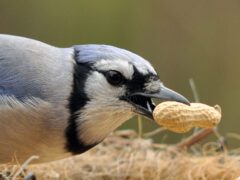The Four Keys to ID
- Size & Shape
This tiny bird has a short neck and large head, giving it a distinctive, rather spherical body shape. It also has a long, narrow tail and a short bill a bit thicker than a warbler’s but thinner than a finch’s.
Relative Size
Smaller than a sparrow

 sparrow-sized or smaller
sparrow-sized or smallerMeasurements
- Both Sexes
- Length: 4.7-5.9 in (12-15 cm)
- Weight: 0.3-0.5 oz (9-14 g)
- Wingspan: 6.3-8.3 in (16-21 cm)
© Scott Martin / Macaulay Library
- Color Pattern
The cap and bib are black, the cheeks white, the back soft gray, the wing feathers gray edged with white, and the underparts soft buffy on the sides grading to white beneath. The cap extends down just beyond the black eyes, making the small eyes tricky to see.
© Jay McGowan / Macaulay Library - Behavior
Black-capped Chickadees seldom remain at feeders except to grab a seed to eat elsewhere. They are acrobatic and associate in flocks—the sudden activity when a flock arrives is distinctive. They often fly across roads and open areas one at a time with a bouncy flight.
- Habitat
Chickadees may be found in any habitat that has trees or woody shrubs, from forests and woodlots to residential neighborhoods and parks, and sometimes weedy fields and cattail marshes. They frequently nest in birch or alder trees.
© Monique Maynard / Macaulay Library












